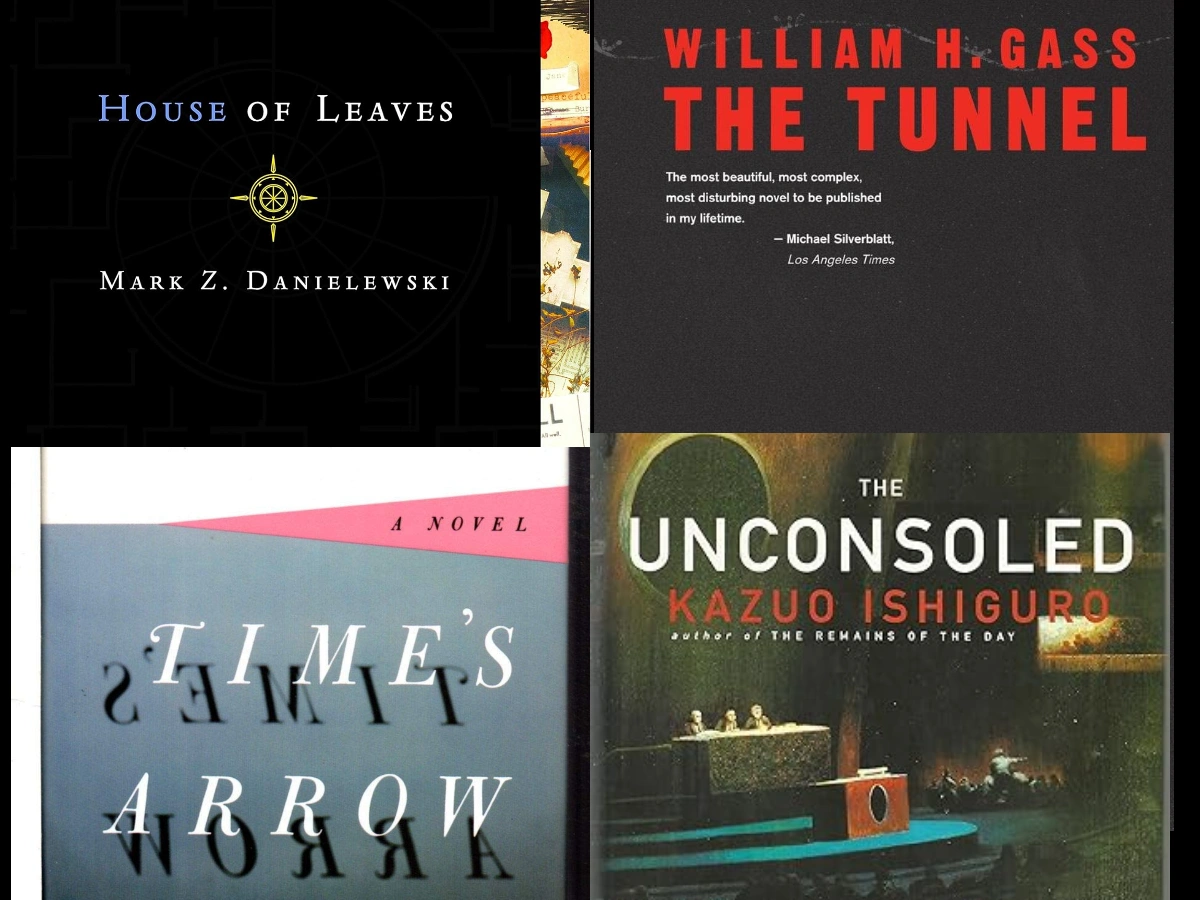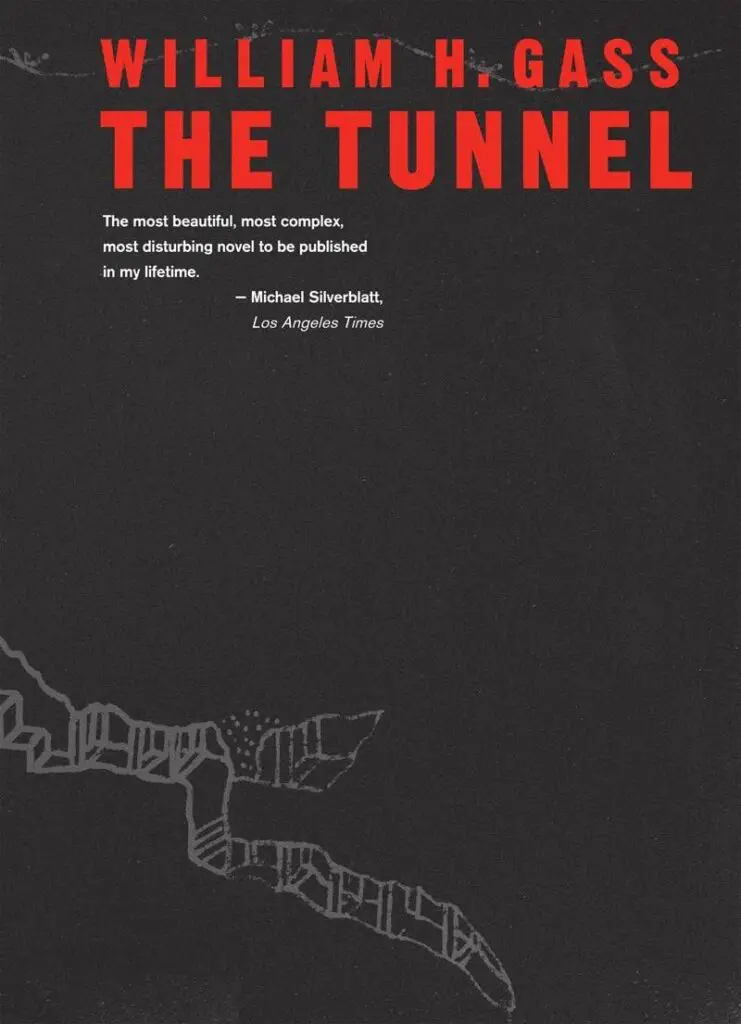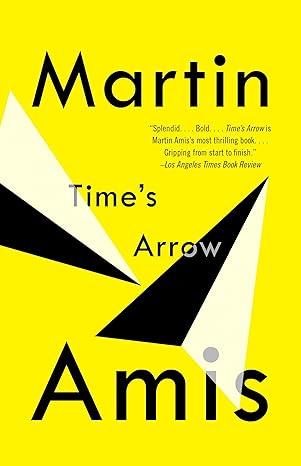Here are 4 haunting and complex novels that draw you into their madness, leaving your perception of the world shaken and changed.

In This LitStack Review:
House of Leaves By Mark Z. Danielewski
House of Leaves by Mark Z. Danielewski is a labyrinthine novel that defies conventional storytelling, immersing readers in a disorienting and unsettling exploration of a haunted house and the psychological depths it unveils. The novel’s structure is fragmented and layered, weaving together multiple narratives and perspectives through a complex web of footnotes, appendices, and unconventional typography.
One of the central events in the novel is the discovery of a seemingly impossible architectural anomaly within a seemingly ordinary house. The Navidson family, led by documentary filmmaker Will Navidson, moves into a new home in Virginia, only to discover that the house’s interior dimensions are larger than its exterior. A growing hallway appears, leading to a vast and ever-expanding labyrinth that defies the laws of physics.
The novel’s narrative is primarily told through the lens of Johnny Truant, a troubled young man who becomes obsessed with a manuscript written by a blind old man named Zampanò. The manuscript, titled “The Navidson Record,” meticulously analyzes and interprets the events surrounding the Navidson family’s encounters with the house’s labyrinthine depths.
As Johnny delves deeper into the manuscript, his own life begins to unravel, blurring the lines between reality and fiction. He becomes increasingly paranoid and isolated, questioning his own sanity as he becomes consumed by the mysteries of the house and its impact on those who encounter it.


The novel’s unconventional typography mirrors the disorienting nature of the house itself. Words are scattered across pages, sometimes upside down or sideways, creating a sense of vertigo and disorientation. The text becomes a physical representation of the labyrinth, challenging readers to navigate its depths and piece together the fragmented narratives.
House of Leaves is not a conventional horror story filled with jump scares and explicit gore. Instead, it creates an atmosphere of unease and dread, slowly building tension as it explores the psychological impact of the house on its inhabitants. The house becomes a metaphor for the darkness within the human psyche, the hidden fears and anxieties that lurk beneath the surface.
The novel’s events blur the boundaries between reality and perception, leaving readers questioning the nature of truth and the reliability of the narrators. The house itself becomes a shifting, liminal space, defying rational explanation and challenging our understanding of the world around us.
The Tunnel By William Gass
The reading experience of The Tunnel is demanding and immersive, requiring active engagement from the reader to navigate Kohler’s dense prose and grapple with his often disturbing thoughts and confessions. The novel’s unconventional style, with its lengthy and complex sentences, reflects Kohler’s obsessive and rambling mind, creating a sense of claustrophobia and disorientation.
Despite its challenges, The Tunnel offers a rewarding experience for those willing to immerse themselves in its intricate world and grapple with its profound themes. Gass’s masterful use of language and his exploration of dark and complex subjects make the novel a unique and thought-provoking work of literature.
The Tunnel by William Gass is a challenging and thought-provoking novel that delves into the dark and troubled mind of its protagonist, William Kohler, a professor of history with a self-deprecating and misanthropic outlook. The novel is presented as Kohler’s rambling and often obscene monologue, a stream-of-consciousness narrative that interweaves multiple stories and unconventional typography to create a disorienting and unsettling experience.
The novel’s structure is fragmented and non-linear, mirroring Kohler’s own disjointed thoughts and memories. He recounts his troubled past, his failed relationships, and his obsession with the Holocaust and Nazi Germany. His narrative is interspersed with philosophical musings, historical anecdotes, and grotesque fantasies, creating a dense and challenging tapestry of language.
Kohler’s obsession with the Holocaust and Nazi Germany is a central theme in the novel. He delves into the darkest aspects of human nature, exploring the capacity for evil and the complicity of ordinary people in atrocities. His fascination with the Nazi regime is both disturbing and revealing, reflecting his own misanthropic tendencies and his fascination with power and control.
The novel’s unconventional typography contributes to its disorienting effect. Gass employs lengthy and complex sentences, often without punctuation, creating a sense of claustrophobia and immersion in Kohler’s troubled mind. The text is dense and demanding, requiring active engagement from the reader to parse out meaning from the stream of words.
One of the most unsettling events in the novel is Kohler’s recollection of his childhood experience of being locked in a tunnel by his father. This traumatic event becomes a metaphor for Kohler’s own isolation and his descent into his own dark thoughts. The tunnel represents the darkness within his own psyche, the hidden fears and anxieties that he struggles to confront.
Throughout the novel, Kohler’s narrative is interspersed with fictionalized accounts of historical figures and events. He weaves together stories of Nazi officials, philosophers, and literary figures, blurring the lines between reality and imagination. These digressions reflect Kohler’s attempts to make sense of the world around him, but they also contribute to the novel’s disorienting and unsettling atmosphere.
The Tunnel is not a novel for the faint of heart. It is a challenging and demanding work that confronts readers with the darkest aspects of human nature. However, for those willing to immerse themselves in its intricate world and grapple with its profound themes, The Tunnel offers a rewarding and thought-provoking experience.
What Do They Share?
House of Leaves by Mark Z. Danielewski and The Tunnel by William Gass, despite their distinct narratives and subject matter, share several notable aspects of fiction that make them unique and challenging works of literature.
Unreliable Narrators and Fragmented Narratives:
Both novels employ unreliable narrators whose perspectives are subjective and often distorted, creating a sense of ambiguity and uncertainty for the reader. The narratives are fragmented and non-linear, challenging readers to piece together the stories from various sources and perspectives.
Metafictional Elements and Self-Referentiality:
Both novels blur the boundaries between fiction and reality, incorporating metafictional elements that draw attention to the act of storytelling itself. They are self-referential, with the narrators commenting on their own writing process and the nature of the text, further blurring the lines between the fictional world and the reader’s reality.
Experimental and Unconventional Style:
Both novels experiment with unconventional narrative styles and typography. House of Leaves utilizes footnotes, appendices, and unusual page layouts to create a disorienting and immersive experience. The Tunnel uses these same literary and typographical devices, and it also employs a stream-of-consciousness style, with lengthy and complex sentences that reflect the protagonist’s rambling thoughts and obsessions.
Exploration of Dark Themes and Psychological Depths:
Both novels delve into dark and complex themes, exploring the psychological depths of their characters and the hidden truths beneath the surface of reality. They grapple with themes of isolation, obsession, guilt, and the unreliable nature of perception.
Demanding and Rewarding Reading Experience:
Both novels are challenging and demanding reads, requiring active engagement from the reader to navigate their complex structures and interpret their layered meanings. However, they also offer a rewarding experience for those willing to immerse themselves in their intricate worlds and grapple with their profound themes.
These shared aspects of fiction make House of Leaves and The Tunnel stand out as innovative and thought-provoking works that push the boundaries of traditional storytelling. They challenge readers to question the nature of truth, perception, and the power of language to shape our understanding of reality.
Shared Typographical Features as Literary Devices
The variety of features available for typography plays a crucial role in both House of Leaves by Mark Z. Danielewski and The Tunnel by William Gass, serving not just as a means of conveying the narrative but also as an integral part of the storytelling experience itself. The unconventional use of typography in both novels enhances their themes, creates immersive atmospheres, and challenges readers to engage with the text in unconventional ways.
In House of Leaves, the typography is visually striking and disorienting, reflecting the labyrinthine nature of the haunted house at the center of the story. Words are scattered across pages, sometimes upside down or sideways, and different fonts and colors are used to represent different voices and perspectives. This creates a sense of vertigo and disorientation, mirroring the characters’ experiences as they navigate the ever-shifting and expanding house.
The typography in The Tunnel, while less visually chaotic, is equally unconventional and challenging. The novel is presented as a single-paragraph monologue, with lengthy and complex sentences that stretch across pages, often without punctuation. This reflects the protagonist’s rambling and obsessive thoughts, creating a sense of claustrophobia and immersion in his troubled mind.
The use of typography in both novels serves to enhance their themes and create a more immersive reading experience. In House of Leaves, the disorienting typography mirrors the characters’ descent into madness and the unsettling nature of the house itself. In The Tunnel, the dense and claustrophobic typography reflects the protagonist’s isolation and his descent into his own dark thoughts.
Both novels challenge readers to engage with the text in unconventional ways. In House of Leaves, readers must navigate the labyrinthine layout of the pages, piecing together the fragmented narratives from different sources. In The Tunnel, readers must grapple with the protagonist’s dense and rambling prose, parsing out meaning from his stream-of-consciousness monologue.
The typography in House of Leaves and The Tunnel is not merely a stylistic choice; it is an integral part of the storytelling process. It serves to enhance the themes, create immersive atmospheres, and challenge readers to engage with the text in ways that reflect the psychological depths and complexities of the narratives.
Time’s Arrow by Martin Amis
Time’s Arrow is a 1991 novel by Martin Amis. It tells the story of a man named Howard Avalow, who is dying of cancer, in reverse chronological order. The novel explores themes of life, death, and the nature of time.
Reading a narrative that flows backwards can have a number of effects on a reader’s perceptions. For one, it can create a sense of disorientation and confusion. The reader is constantly trying to make sense of the events of the story, which are presented in a non-linear fashion. This can be both challenging and rewarding, as it forces the reader to think about the story in a new way.
Additionally, reading a narrative that flows backwards can make the reader more aware of the passage of time. As the story progresses, the reader is reminded of the inevitability of death. This can be a sobering thought, but it can also be a reminder to appreciate the present moment.
Overall, reading a narrative that flows backwards can be a unique and challenging experience. It can force the reader to think about the story in a new way and to appreciate the passage of time.
Howard Avalow is a complex and morally ambiguous character. He was a Nazi doctor who performed experiments on prisoners in the Holocaust, but he is also dying of cancer and is trying to make amends for his past. The fact that his story is told in reverse chronological order is significant, as it allows the reader to see his character development from the end to the beginning. This creates a sense of suspense and tension, as the reader wonders how Avalow will redeem himself.
At the beginning of the novel, Avalow is a cold and calculating man who is completely devoid of empathy. He is only interested in his own survival and is willing to do whatever it takes to achieve his goals. However, as the story progresses, Avalow begins to have doubts about his actions. He starts to see the humanity in his victims and realizes that he has been responsible for great suffering. This realization leads to a crisis of conscience, and Avalow begins to try to make amends for his past.
The novel ends with Avalow dying in a hospital bed. He is surrounded by his loved ones, and he finally feels at peace with himself. Although he has not been able to undo the damage he has done, he has at least tried to make things right.
Time’s Arrow is a powerful novel that explores the themes of guilt, redemption, and the nature of time. It is a challenging read, but it is ultimately rewarding.
The Unconsoled by Kazuo Ishiguro
The Unconsoled is a 1995 novel by Kazuo Ishiguro. The novel follows the story of Ryder, a famous pianist who travels to the fictional European city of Not-Konstantinople to give a series of concerts. However, Ryder’s stay in Not-Konstantinople is anything but uneventful. He is constantly getting lost, meeting people who seem to know him but he doesn’t know them, and trying to find his way to his hotel. The novel is a complex and challenging work that explores themes of memory, identity, and the nature of reality.
The novel is set in a city that is both familiar and unfamiliar to Ryder. The city is full of people who seem to know him, but he doesn’t know them. He is constantly getting lost, and he can never seem to find his way to his hotel. The novel explores the idea of memory and how it can be unreliable. Ryder is constantly trying to remember things, but he can never seem to get them right. The novel also explores the idea of identity and how it can be fluid and changing. Ryder is never sure who he is or where he belongs. The novel is a complex and challenging work that explores the nature of reality and the human condition.


The fragmented nature of the narrative in The Unconsoled creates a sense of anxiety in the reader by constantly shifting the point of view and the timeline. This makes it difficult to follow the story and understand what is happening. This mirrors the underlying anxiety of the time in which the novel takes place, which was a time of great political and social upheaval. The reader is left feeling lost and confused, just like the characters in the novel.
The novel’s fragmented structure also reflects the way that memory works. Memories are not always linear or coherent. They can be jumbled up and out of order. This is how Ryder experiences his memories in the novel. He is constantly trying to remember things, but he can never seem to get them right. This creates a sense of unease and confusion in the reader, just like it does in Ryder.
The Unconsoled is a complex and challenging novel that explores the nature of memory, identity, and the nature of reality. It is a novel that rewards careful reading and reflection.
I would recommend The Unconsoled to readers who enjoy complex and challenging novels. It is a novel that rewards careful reading and reflection. However, it is not a novel for everyone. Some readers may find it too difficult or confusing. If you are not sure whether you would enjoy The Unconsoled, I recommend reading some reviews or excerpts from the novel before you decide.
How to Stay Sane While Tackling Challenging & Complex Novels
Tackling a challenging or complex novel can be a daunting task, but with the right approach and strategies, readers can enhance their understanding and derive greater enjoyment from the experience. Here are some helpful tips to consider when approaching difficult novels:
Set Realistic Expectations:
Recognize that not all novels are meant to be easy reads. Some authors deliberately employ complex language, unconventional structures, or challenging themes to provoke thought and engage readers on a deeper level. Approach these works with patience and an open mind, accepting that the reading experience may require more effort and reflection.
Read Actively and Annotate:
Engage with the text actively, taking notes, underlining key passages, and jotting down questions or observations. Annotating the text helps you stay focused, retain information, and identify important themes or patterns. Use different colored pens or sticky notes to categorize your annotations for easier reference.
Consult External Resources:
Utilize supplementary materials such as dictionaries, encyclopedias, or online resources to clarify unfamiliar terms, historical references, or cultural contexts. These resources can provide valuable background information and enhance your understanding of the novel’s setting, characters, or themes.
Join Discussion Groups or Forums:
Participate in online or in-person book clubs or discussion forums dedicated to the novel. Engaging with other readers can provide different perspectives, insights, and interpretations that may enrich your own understanding. Sharing your thoughts and questions can lead to stimulating discussions and deepen your appreciation of the work.
Reread and Reflect:
Don’t hesitate to revisit challenging passages or chapters. Rereading allows you to absorb details you may have missed initially and gain a deeper understanding of the narrative structure, character development, or thematic intricacies. Reflection is crucial for internalizing the novel’s message and appreciating its complexities.
Seek Expert Guidance:
If you’re still struggling, consider seeking guidance from literary experts, professors, or experienced readers familiar with the novel or its genre. Their insights and explanations can shed light on obscure passages, provide historical context, or offer different perspectives on the novel’s themes and symbolism.
Don’t Give Up:
Difficult novels can be rewarding and intellectually stimulating. Embrace the challenge and don’t be discouraged if you need to slow down, reread, or seek assistance. The effort invested in understanding a complex work can lead to a deeper appreciation of literature and enhance your critical thinking skills.
Give Yourself A Break and Credit
Be sure and give yourself a break. If you feel you simply cannot understand parts of a novel or pieces of a manuscript, and you have not been able to comprehend the meaning, maybe you’re not supposed to understand. Maybe it’s not supposed to be intellectual. Maybe you’re supposed to feel emotions instead of analyzing. Give yourself credit as a living, breathing, mistake-making, feeling, human. Keep on reading. Let the words on the page wash over and through you, infusing you with their rhythms and sounds, imparting their own, sometimes fleeting, meaning.
Other LitStack Resources
Be sure and look at our other LitStack Recs for our recommendations on books you should read, as well as these reviews by Lauren Alwan, and these reviews by Sharon Browning.
As a Bookshop, Malaprop’s, BAM, Barnes & Noble, Audiobooks.com, Amazon, and Envato affiliate, LitStack may earn a commission at no cost to you when you purchase products through our affiliate links.
/bann



